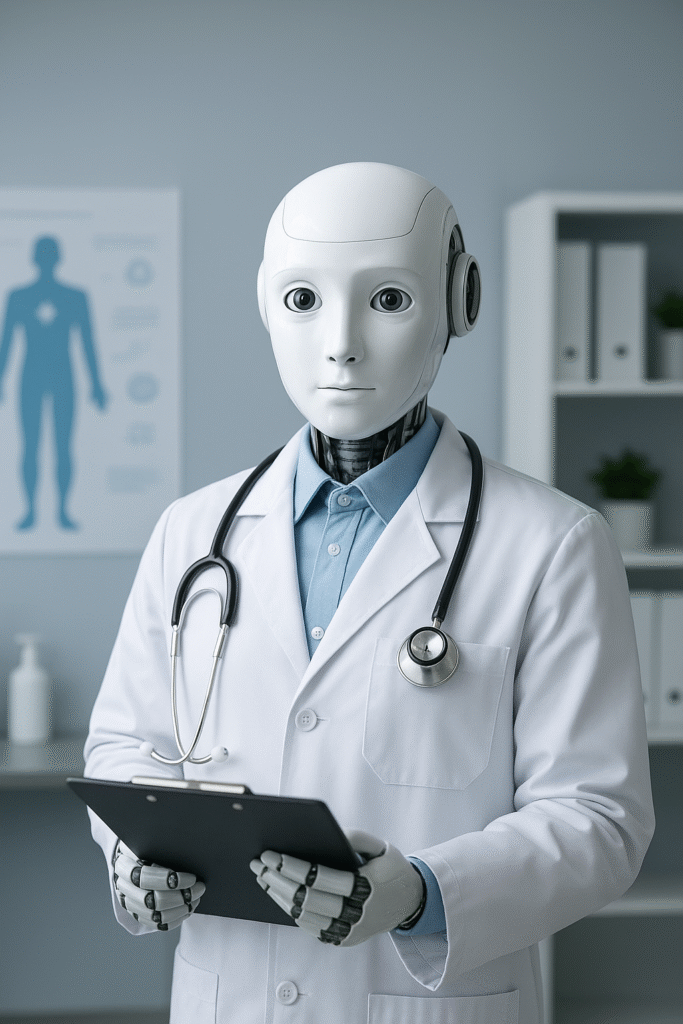
In recent years, robotics and artificial intelligence (AI) have revolutionized healthcare, offering solutions that are smarter, faster, and more precise than ever before. From humanoid robots to autonomous mobile platforms, these innovations are redefining patient care, medical training, and disaster response. By combining advanced sensors, AI algorithms, and responsive materials, robodoctors are becoming essential tools in modern medicine.
Transforming Hospitals with AI-Driven Care
One of the most striking examples of AI in healthcare comes from Tsinghua University in China, which launched the world’s first AI hospital in 2024. This hospital employs AI doctors and nurses powered by large language models (LLMs) to diagnose, treat, and monitor patients across 21 specialties. With 42 AI doctors and four AI nurses, the system can handle over 3,000 patients daily while maintaining a 93% accuracy rate in diagnoses based on the MedQA benchmark.
The AI hospital serves two key purposes:
- Providing affordable, round-the-clock healthcare with expert-level medical knowledge.
- Offering a virtual medical training environment for students, including simulated patients to improve clinical skills and decision-making.
This innovative setup demonstrates how robodoctors can enhance efficiency, reduce costs, and deliver high-quality care at scale.
Humanoid Robots in Healthcare
Humanoid robots have advanced far beyond science fiction. AI-enabled humanoid robots, such as Hanson Robotics’ Sophia and the healthcare-focused Beomni, are now assisting in clinical settings. These robots combine AI and human-like behavior to foster trust among patients while performing medical tasks.
Humanoid robots excel in:
- Routine patient care
- Elderly assistance
- High-risk scenarios, such as handling infectious diseases, reducing the risk to human healthcare workers—a lesson reinforced during the COVID-19 pandemic.
By integrating humanoid robots, hospitals can maintain high standards of safety, reliability, and patient comfort.
Robodoctors for Disaster Response
Robotics isn’t limited to hospitals. Mobile robotic platforms are transforming disaster medicine. The University of Sheffield in the UK developed an autonomous ground vehicle equipped with robotic arms and virtual reality (VR) capabilities, allowing medics to perform remote triage in hazardous environments.
These robots can:
- Assess vital signs such as heart rate, blood pressure, and temperature
- Administer pain relief or medication via auto-injectors
- Provide real-time data to human operators for informed decision-making
Future iterations aim to create large-scale deployable medical platforms for rapid disaster response, improving both safety and efficiency in emergencies.
In-Home Robodoctors
The rise of telemedicine has paved the way for autonomous in-home robodoctors, such as the model developed at National Taipei University, Taiwan. These robots can:
- Detect patients using visual recognition
- Retrieve medical history before examinations
- Conduct physical assessments with embedded sensors (e.g., heart rate, temperature, and skin checks)
- Coordinate with human doctors via telemedicine
In-home robodoctors reduce hospital visits and waiting times while providing accurate and timely medical advice, making healthcare more accessible and convenient.
Robotic Surgery: Precision and Minimally Invasive Procedures
Robotic assistance in surgery has become a critical tool for precision and minimally invasive procedures. Surgeons control robotic arms via a console, allowing smaller incisions, less tissue disruption, and more accurate operations.
Robotic systems are used in a wide range of procedures, including:
- Appendectomy and colectomy
- Gallbladder removal and gastric bypass
- Brain, spinal, and cardiothoracic surgeries
- Gynecologic and urologic procedures
With robotic surgery, the combination of human expertise and robotic precision improves patient outcomes and recovery times.
The Future of Robodoctors
The healthcare industry is witnessing a remarkable surge in robotics and AI applications. While regulatory challenges remain, robodoctors are already making significant clinical impacts. As AI algorithms improve and robotics hardware becomes more advanced, we can expect robodoctors to play an increasingly prominent role in everyday healthcare—offering essential care, reducing costs, and expanding access for patients worldwide.
Sources
https://my.clevelandclinic.org/health/treatments/22178-robotic-surgery
https://www.hansonrobotics.com/sophia/
https://www.frontiersin.org/journals/communication/articles/10.3389/fcomm.2024.1420312/full
https://www.uclahealth.org/medical-services/robotic-surgery/what-robotic-surgery
https://med-tech.world/news/china-worlds-first-ai-hospital-milestone-in-healthcare-innovation/
https://med-tech.world/news/chinas-ai-hospital-transforming-healthcare/